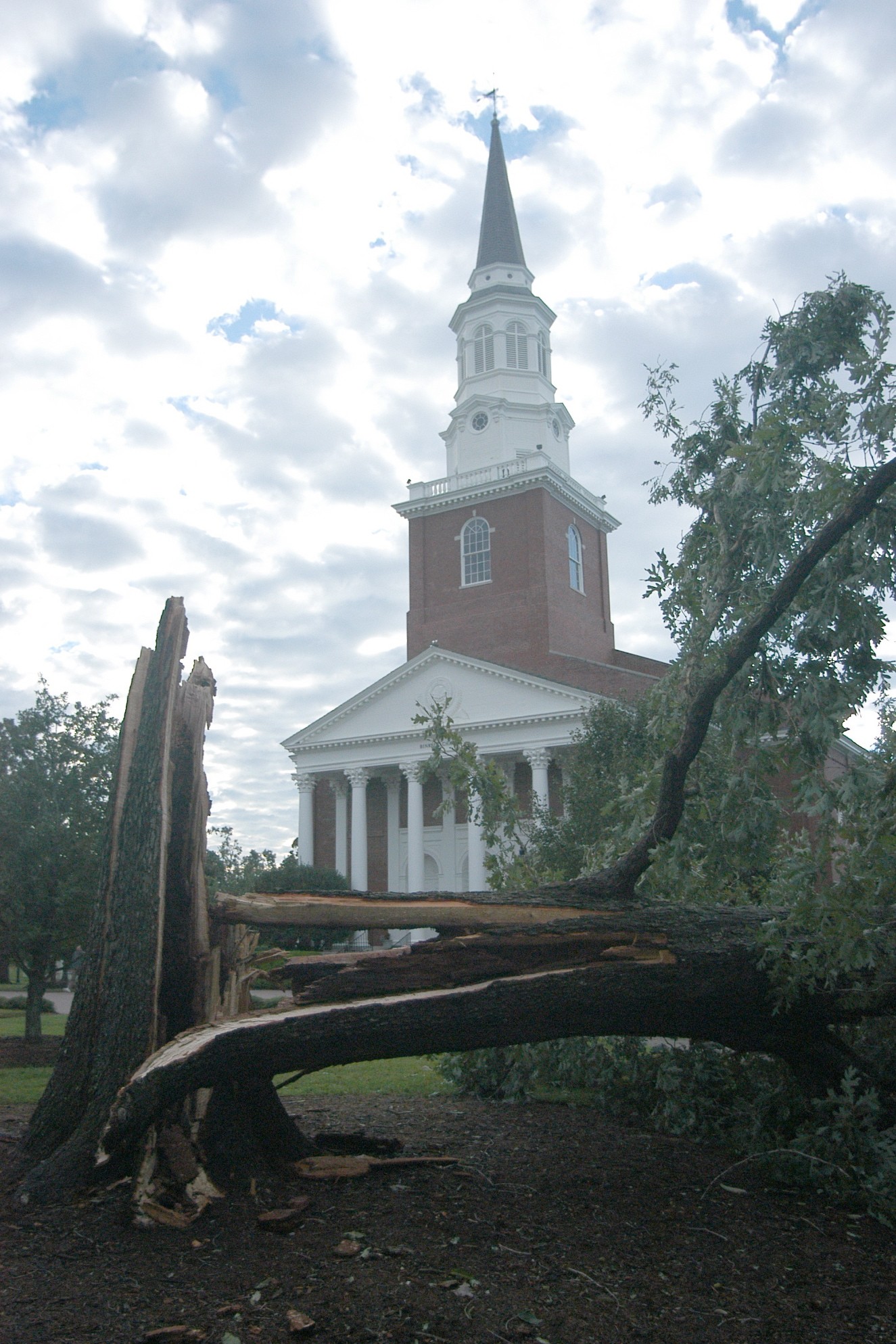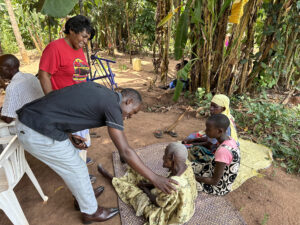
NASHVILLE, Tenn. (BP)–Hurricane Isabel’s path of destruction left more than 4.5 million people without power and at least 17 people dead, according to the Associated Press, as it swept through the East Coast Sept. 18. Much of the damage occurred in Virginia, where nine people were killed and 1.5 million left without power. Additionally, Isabel was blamed for two deaths in Maryland and one each in New Jersey, North Carolina, Pennsylvania and Rhode Island.
“Virginians need to realize that they’re in for a tough couple of days,” Gov. Mark R. Warner said, according to AP.
Joe Weatherbee of the Portsmouth Baptist Association near Norfolk and Virginia Beach reported that Sept. 19 was a “bright, sunshiny day,” after Isabel moved through. He said more than a million people were without power in the area, but the flooding had subsided and the winds had calmed down. People were cutting down trees and starting to clean up.
“The main thing is getting power back,” he told Baptist Press.
Residents in northern Virginia were urged to boil their water, The Washington Post reported.
More than 1,500 flights were canceled through the East and Northeast.
The storm, which had maximum sustained winds of 105 mph when it hit land, was downgraded to a tropical storm the evening of Sept. 18 and hours later to a tropical depression.
It was the largest hurricane to hit the Atlantic region since Hurricane Floyd in 1999.
Baptist Press made numerous calls to check on Baptist associations and churches in the areas affected by the hurricane, but in the cases where phones were working it was still too early to assess total damage. The main problems were power outages, flooding and downed trees, but reports indicated that most everyone was fine and the storm was not as devastating as predicted.
In Kinston, N.C., near the coast, David Leary, director of missions for the Neuse Baptist Association in LaGrange, reported that a lot of trees were down in the area and there was significant flooding. He predicted that more flooding was to come as the Neuse River continued to overflow.
Of the 45 churches within the Neuse association, Leary said he had not heard any reports of damage, though he planned to venture out during the day for closer inspections.
“In the past, we’ve had steeples gone and things like that,” he said.
Leary reported that in the Kinston area they experienced winds from 60-80 mph and a 6 p.m.-6 a.m. curfew had been in place. He also said that within the association people were trained with chainsaws and a flatbed trailer to help remove trees when called upon. As in most other areas, power outages were the main problem.
In Wake Forest, Isabel knocked down some large trees on the campus of Southeastern Baptist Theological Seminary, but otherwise did little damage. No campus buildings were damaged in the storm, which sent tropical storm-force winds though Wake Forest in east-central North Carolina. The only victims were three large trees on campus, along with limbs strewn about. The cleanup from the storm should cost about $25,000, said Ryan Hutchinson, vice president for administration.
By way of comparison, Hurricane Fran, which hit North Carolina just a few years ago, took down two-thirds of the trees on the 170-year-old Wake Forest campus and caused $225,000 in damage.
Hutchinson praised the work of Southeastern’s emergency preparedness task force, which began meeting four days before the storm hit to initiate a plan of action.
“We were able to communicate effectively to students all the pertinent information, including the safety procedures and school closings, that they needed,” Hutchinson said.
–30–
With reporting by Michael Foust, Erin Curry & Jason Hall. (BP) photo posted in the BP Photo Library at http://www.bpnews.net. Photo title: AFTER ISABEL.

















